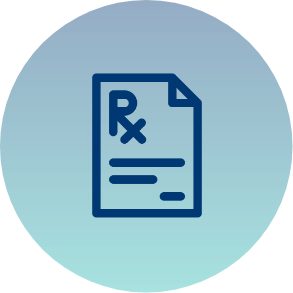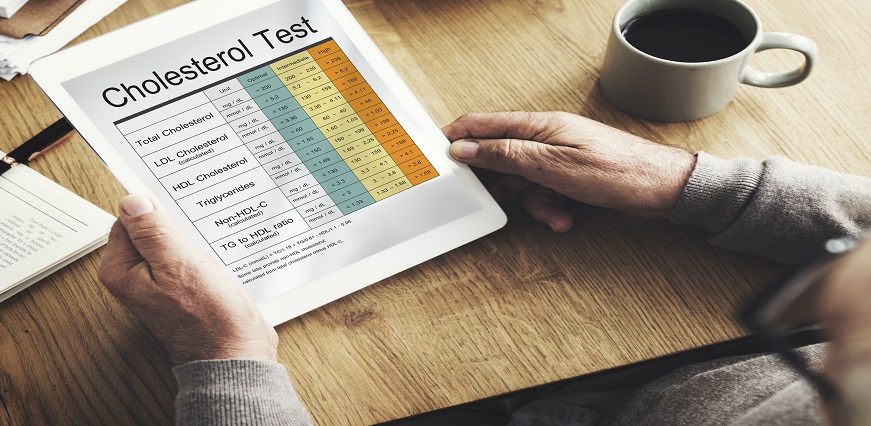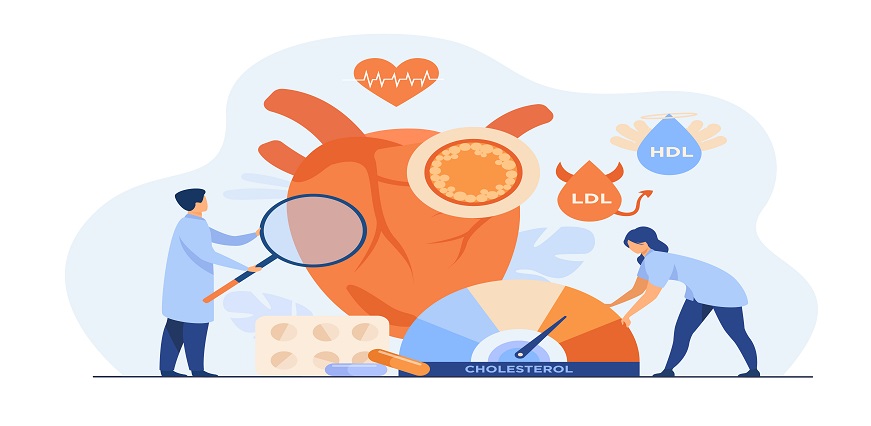Queries about this test
- Ans: लिपिड प्रोफाइल टेस्ट एक Blood Test है जो लिपिड को मापता है, जो blood में मोटापा और कोलेस्ट्रॉल होते हैं। इस test का उपयोग हृदय रोग और अन्य स्वास्थ्य स्थितियों के लिए आपके जोखिम को निर्धारित करने में मदद के लिए किया जा सकता है।
- Ans: A lipid profile test is a test for measuring and assessing the levels of fat in your blood. It is an important test to understand your overall health and risk factors for developing diseases such as heart disease, stroke, and diabetes.
- Ans: लिपिड प्रोफाइल एक blood test है जो आपके blood में कुछ मोटापा और कोलेस्ट्रॉल के स्तर को मापता है।
- Ans: 1. Total Cholesterol/HDL Ratio 2. Triglyceride 3. HDL Cholesterol 4. LDL Cholesterol 5. VLDL Cholesterol 6. Cholesterol 7. Non-HDL Cholesterol 8. HDL/LDL
Customer reviews
4.67 out of 5Review this test
Share your thoughts with others
How Does Home Sample Collection work?

Lipid Profile,Serum Price in Other Cities
-
Lipid Profile Test Price in Delhi
Lipid Profile Test Price in Rohtak
Lipid Profile Test Price in Hisar
Lipid Profile Test Price in Gohana
Lipid Profile Test Price in Mohali
Lipid Profile Test Price in Chandigarh
Lipid Profile Test Price in Panchkula
Lipid Profile Test Price in Jalandhar
Lipid Profile Test Price in Ludhiana
Lipid Profile Test Price in Amritsar
Lipid Profile Test Price in Dehradun
Lipid Profile Test Price in Haridwar
Lipid Profile Test Price in Rishikesh
Lipid Profile Test Price in Rudrapur
Lipid Profile Test Price in Saharanpur
Lipid Profile Test Price in Noida
Lipid Profile Test Price in Gurgaon
Lipid Profile Test Price in Faridabad
Lipid Profile Test Price in Ghaziabad
Lipid Profile Test Price in Mumbai
Lipid Profile Test Price in Bathinda
Lipid Profile Test Price in Lucknow
Lipid Profile Test Price in Gwalior
Lipid Profile Test Price in Sonipat
Lipid Profile Test Price in Meerut
Lipid Profile Test Price in Pune
Lipid Profile Test Price in Haldwani
Lipid Profile Test Price in Patiala
Lipid Profile Test Price in Panipat
Lipid Profile Test Price in Roorkee
Lipid Profile Test Price in Kanpur
Lipid Profile Test Price in Rewari
Lipid Profile Test Price in Muzaffar Nagar
Lipid Profile Test Price in Varanasi
Lipid Profile Test Price in Ambala
Lipid Profile Test Price in Agra
Lipid Profile Test Price in Mathura
Lipid Profile Test Price in Sirsa
Lipid Profile Test Price in Khanna
Lipid Profile Test Price in Jaipur
Lipid Profile Test Price in Bengaluru
Lipid Profile Test Price in Hyderabad
Lipid Profile Test Price in Chennai
Lipid Profile Test Price in Nagpur
Lipid Profile Test Price in Ahmedabad
Lipid Profile Test Price in Karnal
Lipid Profile Test Price in Kolkata
Lipid Profile Test Price in Patna
Lipid Profile Test Price in Moradabad
Lipid Profile Test Price in Aligarh
Lipid Profile Test Price in Pathankot
Lipid Profile Test Price in Firozpur
Lipid Profile Test Price in Bhopal
Lipid Profile Test Price in Guwahati
Lipid Profile Test Price in Bhubaneswar
Lipid Profile Test Price in Hoshiarpur
Lipid Profile Test Price in Indore













 7982100200
7982100200




 Test Name
Test Name  Also Known as
Also Known as  Sample Type
Sample Type  Gender
Gender  Age group
Age group  Report Timeline
Report Timeline  This Test Includes
This Test Includes  Price
Price















 To reach our help desk call 9213188888
To reach our help desk call 9213188888.png)